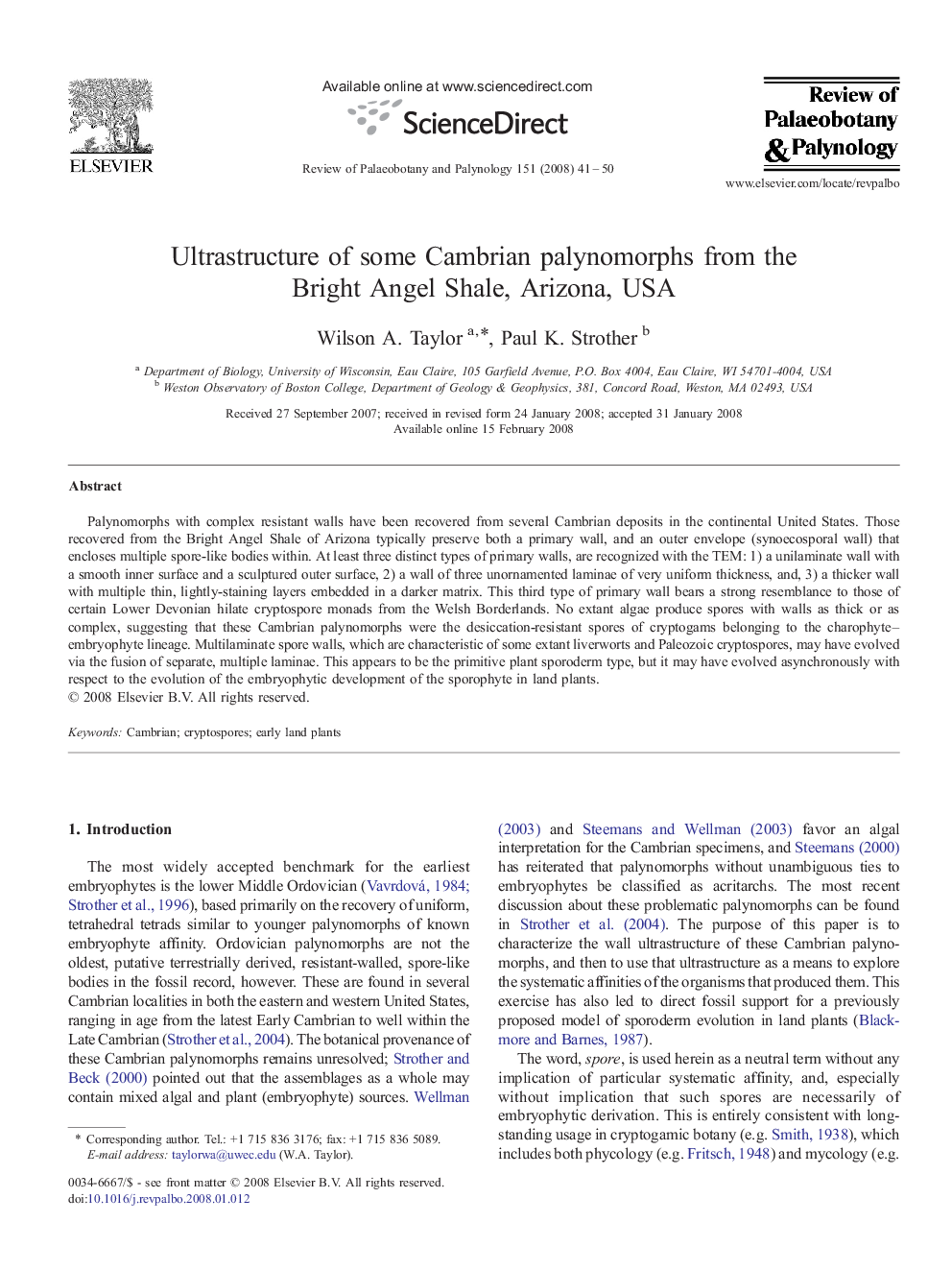| Article ID | Journal | Published Year | Pages | File Type |
|---|---|---|---|---|
| 4750856 | Review of Palaeobotany and Palynology | 2008 | 10 Pages |
Palynomorphs with complex resistant walls have been recovered from several Cambrian deposits in the continental United States. Those recovered from the Bright Angel Shale of Arizona typically preserve both a primary wall, and an outer envelope (synoecosporal wall) that encloses multiple spore-like bodies within. At least three distinct types of primary walls, are recognized with the TEM: 1) a unilaminate wall with a smooth inner surface and a sculptured outer surface, 2) a wall of three unornamented laminae of very uniform thickness, and, 3) a thicker wall with multiple thin, lightly-staining layers embedded in a darker matrix. This third type of primary wall bears a strong resemblance to those of certain Lower Devonian hilate cryptospore monads from the Welsh Borderlands. No extant algae produce spores with walls as thick or as complex, suggesting that these Cambrian palynomorphs were the desiccation-resistant spores of cryptogams belonging to the charophyte–embryophyte lineage. Multilaminate spore walls, which are characteristic of some extant liverworts and Paleozoic cryptospores, may have evolved via the fusion of separate, multiple laminae. This appears to be the primitive plant sporoderm type, but it may have evolved asynchronously with respect to the evolution of the embryophytic development of the sporophyte in land plants.
